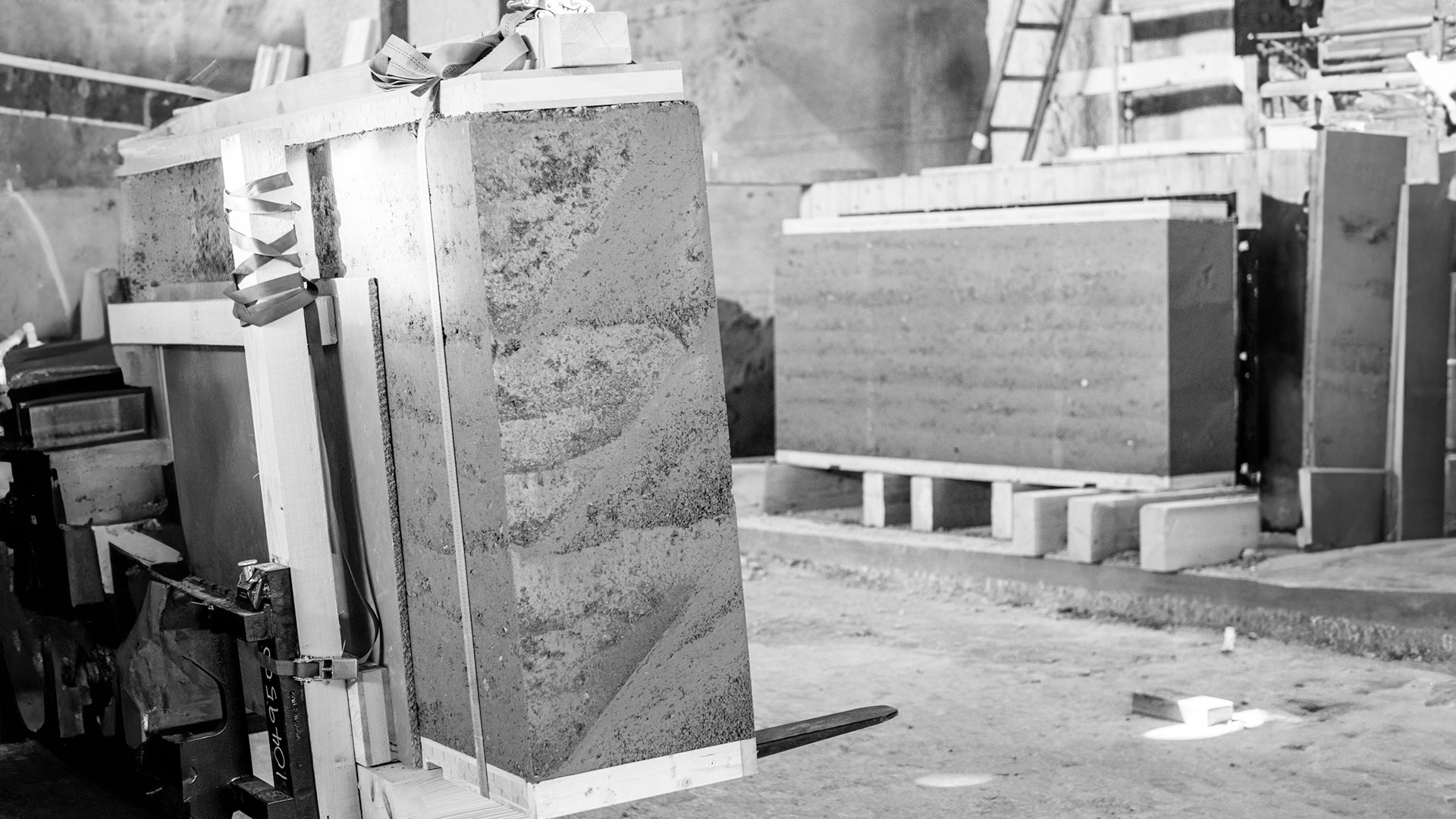Production and Drying of Rammed Earth Elements
Think Subproject 4 addresses key challenges in scaling the prefabrication of rammed-earth construction, including efficient drying processes and the development of structural load transfer between walls, ceilings, and joints. Building on SP2 findings, this subproject aims to create the foundations for industrial-scale production at competitive costs, paving the way for broader adoption of sustainable construction practices.

"Since the industrial revolution, rammed earth construction has lacked innovation and development in the entire manufacturing process. Components, and how forces are transmitted between components, can be designed, starting with how the material is prepared and mixed, how the material gets to and into the formwork, how and with which equipment it is compacted there, how it is shuttered and stripped, how it quickly dries and in an environmentally friendly way. During processing, existing construction machinery (crushers, screening plants, etc.) must be adapted to the requirements of rammed earth production; one challenge is the clay content that is deposited in the machines. Today transportation into the formwork and compaction can be handled by robotics. Robots are equipped with compaction devices and programmed accordingly to work quickly and with little human labour.”
This description of the prefabrication of rammed earth was already written in the nineteenth century by François Cointereaux, and has been advanced in the last twenty years by the Austrian earth builder Martin Rauch. To date, there are very few companies in Europe or in the world who deal with these large-scale prefabrication challenges in detail, and who furthermore implement actual construction projects. In addition to production, efficient drying is a known challenge, which will be initially developed and evaluated in this subproject using life-cylce (LC) analyses. The final area of research in this SP is the design of the force transmission between ceilings and the walls components, as well as the force transmission between the individual joints. Based on the principles developed in SP2, SP4 focuses on the challenges mentioned and provides the basis for industrial production at an economical and competitive price.